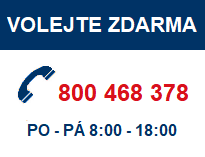Detail analýzy
| 14.03.2022 / Erste Group Research |
Russia’s invasion of Ukraine weighs on CEE The war in Ukraine highlights risks of subdued growth or stagflation in some local economies, as lower economic growth is likely to be accompanied by higher inflation (courtesy of elevated energy and food prices). Central banks thus might find themselves between a rock and a hard place. Albeit direct trade links with Russia, Ukraine and Belarus are generally low (close to or below 6% of total imports/ exports), the region is highly dependent on Russian gas and oil imports. Russia accounts for over 80% of all gas imports in Poland, Slovakia and Serbia, and is just shy of that in Slovenia. Romania is an outlier, as it benefits from strong local production – amounting to roughly 70% of its total needs. Uncertainty and high inflation will weigh on household consumption and investments, compounded by direct and indirect trade impact from the war and sanctions, as well as by already existing shortages along the supply chain. Thus, CEE8 growth should average 3% this year. Once the situation improves, GDP growth may speed up to 4.1% on average in 2023, supported also by Next Generation EU funds. While a quarter ago we were expecting inflation to peak in 1Q22 and ease in 2H22 thanks to moderation of growth of food prices and strong base effect in fuel prices, Russia’s invasion of Ukraine changed the course of events. The war has sent commodity prices to new highs with little prospect for full reverse of the move in the mid-run. Thus, inflation will accelerate further across the region. In 2022, we expect CPI to average 9.7% in CEE from 4.5% recorded in 2021. |
|
|
Základní informace
| Autor | Erste Group Research |
| Datum | 14.03.2022 |
| Jazyk |  |
| Název produktu | CEE Country Macro Outlook |
| Hlavní téma | Makro/Úrokové sazby, Směnné kurzy/FX |
| Zaostřeno na ekonomiku | CEE |
| Zaměřeno na měnu | - |
| Zaměřeno na sektor | - |
| Stáhnout |

